If you are thinking about correcting your hair color with toner, you have to choose the right volume developer to mix with the toner according to your desired results.
Generally, 10, 20, 30, and 40 volume developers are used with hair toner, each creating different effects. But how do you determine which one is right for you?
In this article, we’ll break down the uses and results you can expect from the different developers with toners.
We’ll also discuss which one will work best for toning, subtle coloring, or maximum lifting, and provide tips on how to use developers correctly based on your hair type and condition.
Why Do You Need To Use Developer With Toner?
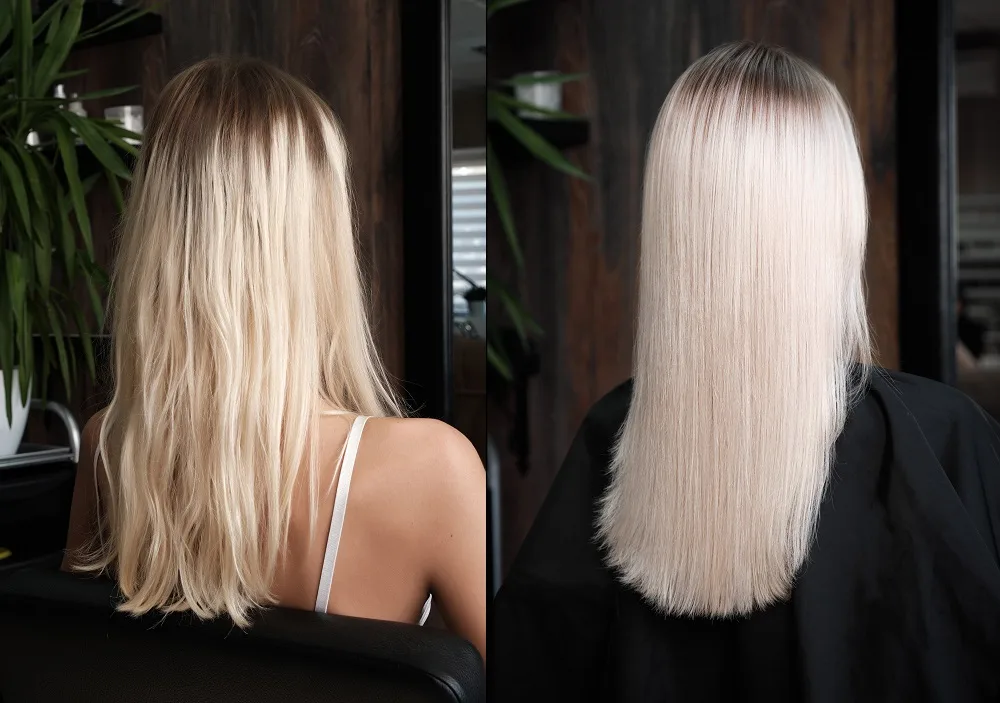
Toner helps you personalize your bleached or color-treated hair. It removes unwanted undertones while adding shine to your hair.
A hair toner does not produce the best results on its own. Therefore, you must pair it with a developer to be effective.
The developer acts as the vehicle to deliver the toner into the hair shaft, while the volume determines the level of lifting or depositing that occurs.
Developers contain hydrogen peroxide, which opens up the hair cuticle, allowing toner to deposit color into your hair. Without a developer, any toner you use would wash out from your hair within a few washes.
That’s why all toners except toning shampoo and conditioner require a developer for the best results.
Choosing the Right Volume Developer for Toner
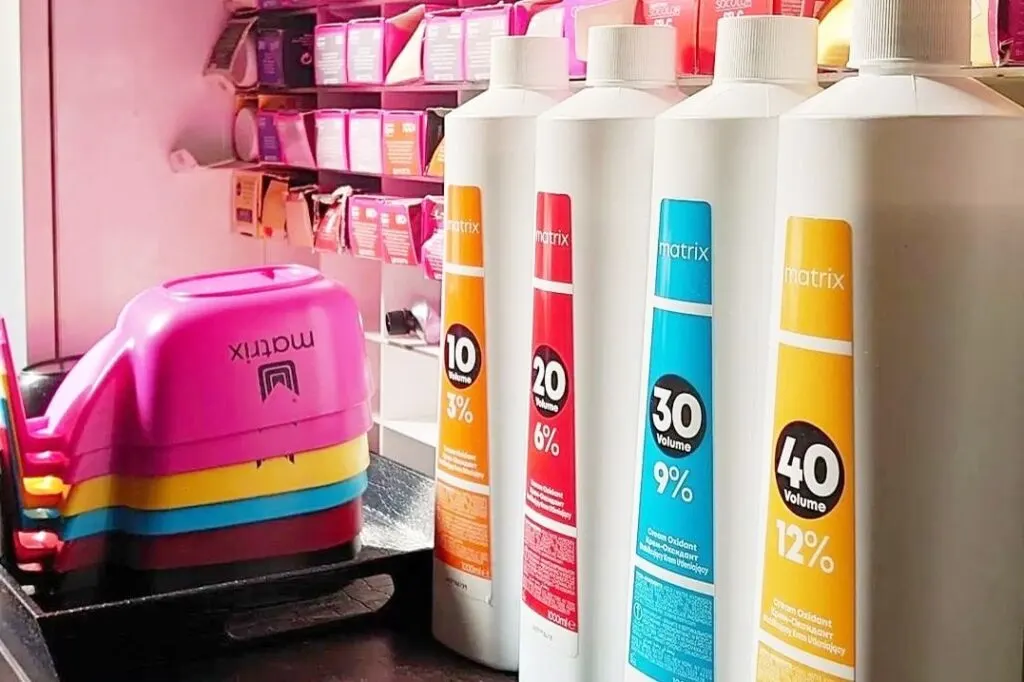
What developer to use with toner depends on your hair health, desired results, and manufacturer recommendations.
Use 30- and 40-volume developers if you want drastic changes to your hair color. Use 20-vol developers to lift hair color a level or two and 10-vol developers for low-lifting effects.
Developers come in four levels depending on the percentage of hydrogen peroxide:
- 10 vol has 3% hydrogen peroxide
- 20 vol has 6% hydrogen peroxide
- 30 vol has 9% hydrogen peroxide
- 40 vol has 12% hydrogen peroxide
The volume of the developer indicates its strength, with 10 volts being the weakest and 40 being the strongest. A 10-volume developer has a lower ability to lift color compared to a 40-volume developer.
A lower volume developer (like 10 or 20 volume) is typically used with toner for subtle changes and to deposit color without significant lifting.
Some manufacturers have produced 50+ volume developers. However, never use these developers at home due to the higher possibility of damaging your hair and burning your scalp severely.
But what developer to use with toner? Well, it depends on the following:
Hair Health
Developers contain hydrogen peroxide. This ingredient is responsible for opening up the hair cuticle but can damage the hair structure.
If your hair’s health is already compromised, a low-strength developer is the best option to use with toner. That’s why it’s generally recommended to use a 10-volume developer for toning bleached hair.
A 10-volume developer has the least damage to hair as it is a deposit-only formula that slightly opens the hair cuticle.
In addition to how damaged your hair is, you should consider whether you have thin or thick hair. Thin hair is fragile and more likely to suffer severe damage when using a 30- or 40-vol developer.
Desired Results
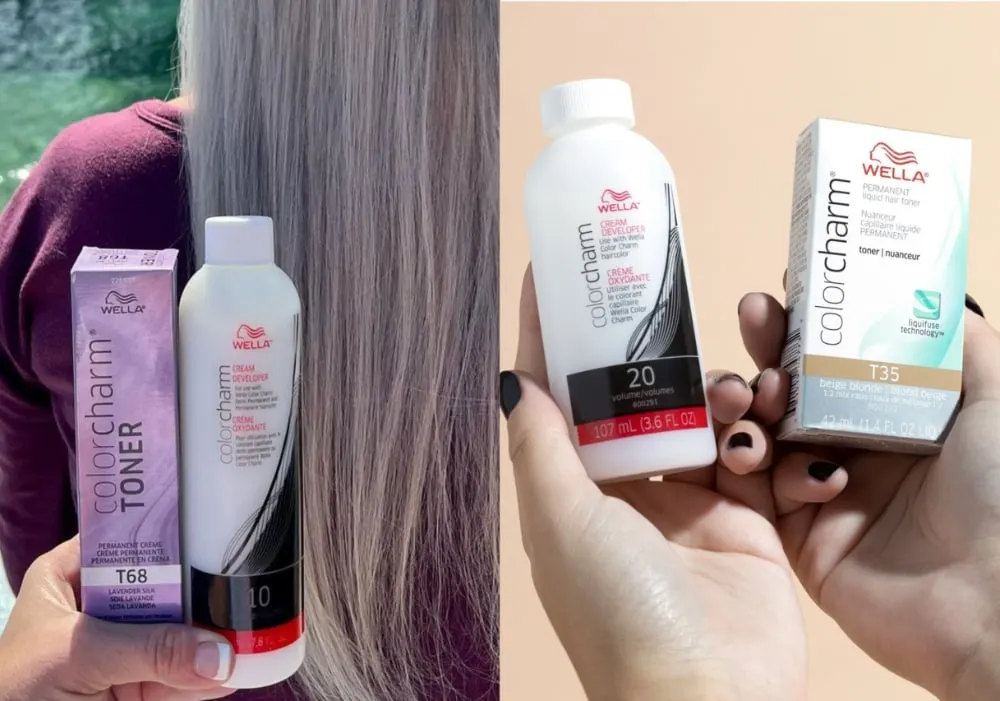
Depending on the desired outcome, you can use a developer with toner to color your hair and lift it a shade or more.
Volume-10 developer is the best choice when you want to change the tone of your darker hair. Since it has the lowest lifting effects, it does not change your hair color drastically. It’s the perfect choice to eliminate brassy tones on blonde hair.
20-vol developer is the best if you want to cover stubborn grays or lift your hair color a level or two. It’s also a great choice if you have minimal damage to your hair.
30- and 40-volume developers are the go-to choice when you want drastic changes in your hair color. With a 30 or 40-volume developer, you can go from medium brown hair to blonde.
It’s best to use 30- and 40-vol developers with a professional due to their strength and potential to damage your hair and burn your scalp.
If you need help deciding what strength of developer to use, settle with vol-20, which is the happy medium when toning hair. It is not too strong or too weak. Use a 20-volume developer with permanent dye for lasting results.
Manufacturer Recommendations
Each toner comes with specific instructions on what volume of developer to use. These instructions should take precedence when choosing the developer to use. If you’re unsure what to do, consult a hair colorist.
You’ll also find that most toner manufacturers have developed specific developers to go with their line of products. Therefore, using what manufacturers recommend is more likely to deliver the results you expect.
Some toners and developers are also indicated for professional use only. You should not purchase them to use at home.
How To Use Toner With Developer
In addition to knowing what developer to use with toner, you must know how to use it correctly to achieve the desired results. You can tone your hair at home but must follow the proper process and technique.
Here are the key steps to follow when using a toner with a developer.
Step 1: Gather the Required Tools and Products
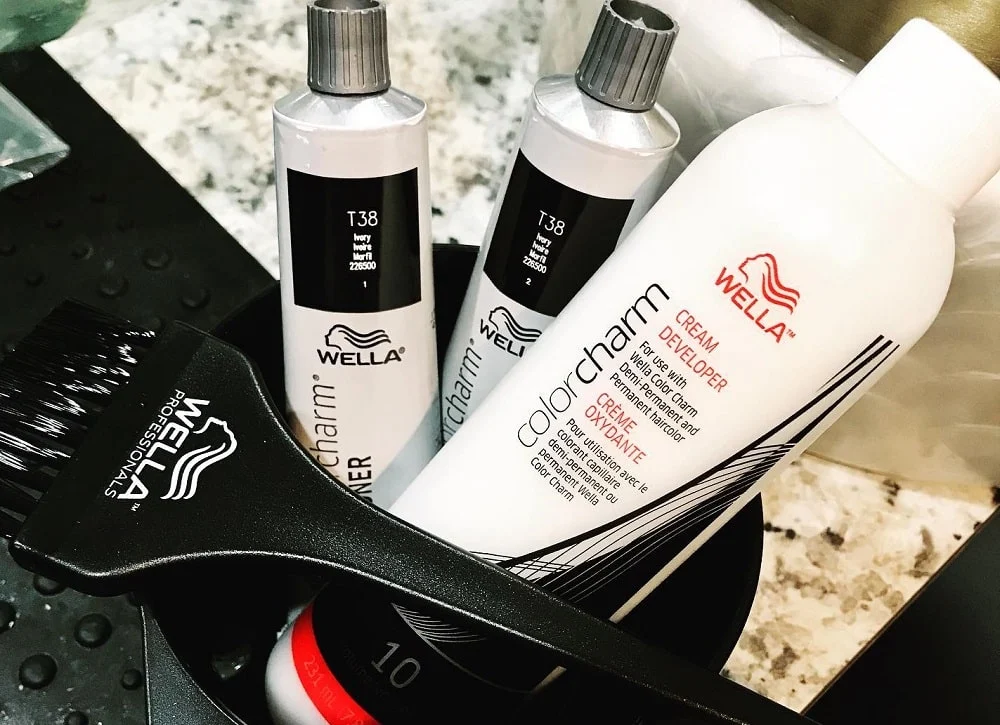
Some of the tools and products you’ll need to tone your hair include:
- A mixing bowl
- An applicator brush
- Toner
- Developer
- Protective gloves
- A hairdresser’s cape to protect your clothes
Step 2: Protect Your Surfaces and Hands
Toner can stain your clothes, surfaces, and hands. Developers can also irritate your hands and skin. Therefore, you must protect yourself with latex gloves and an old T-shirt or hairdresser’s cape to protect your clothes.
Step 3: Mix Developer and Toner
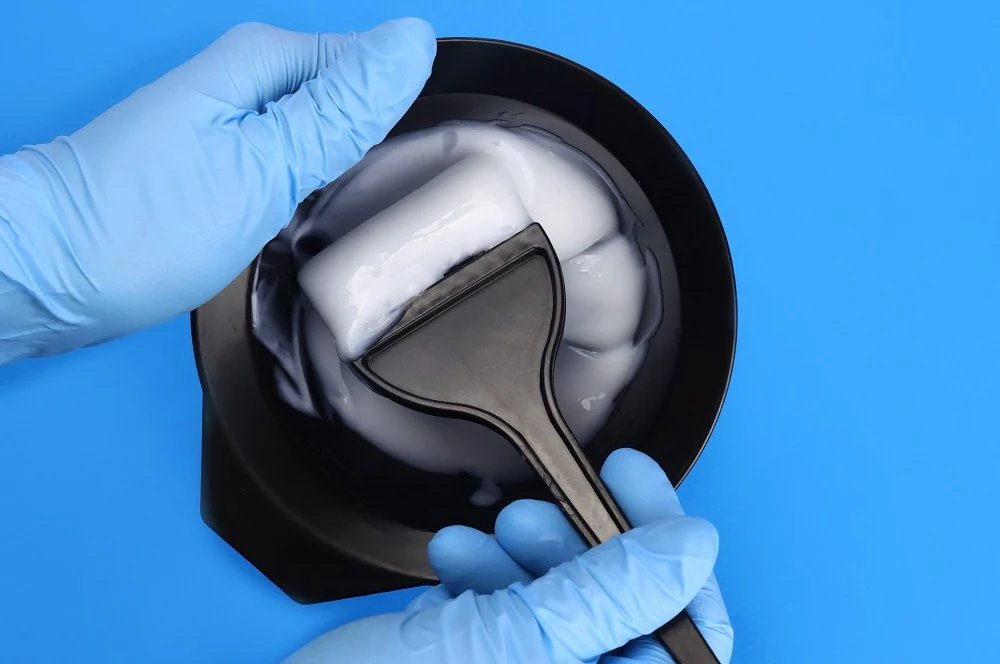
Mix two parts developer with one part toner in a bowl. Stir them thoroughly with an applicator brush to produce a smooth, gel-like consistency.
Most developers and toners are mixed in a 2:1 ratio. However, reading the toner and developer packaging instructions is advisable to determine the correct ratios.
Step 4: Section Your Hair
Section your hair into four to simplify the application process. You should apply toner to damp hair for the best results. If you’ve just bleached your hair, rinse it thoroughly to remove all bleach.
Shampoo the hair and towel dry until damp. You can also shampoo your hair if it’s been a few days or weeks since bleaching your hair.
Step 5: Apply Toner
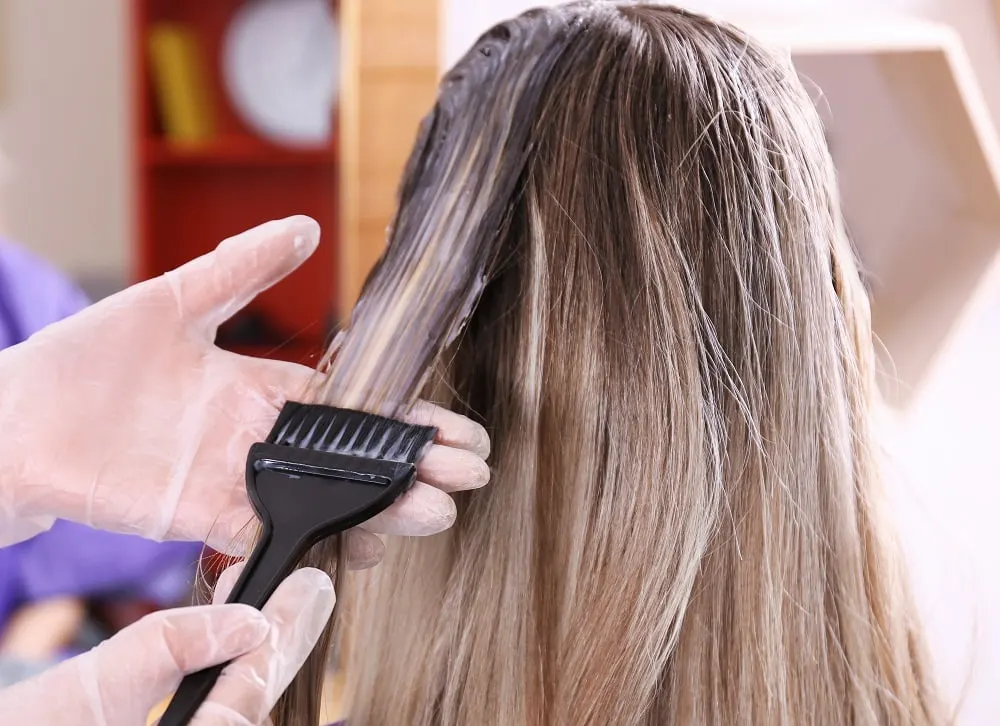
Apply toner to the hair, each section at a time, ensuring to saturate all strands of hair. Use the applicator brush to apply the toner-developer mixture from root to tip to cover all your hair.
Step 6: Allow the Toner to Process
Leave the toner to process for 20-45 minutes, depending on the toner you’re using.
You should leave semi-permanent toners for about 20 minutes, while permanent toners should process for up to 45 minutes.
Step 7: Rinse, Shampoo, and Condition Your Hair
After the hair processes, rinse thoroughly to remove the toner and developer mixture, then shampoo and condition your hair. Ensure you’re using color-safe products to avoid stripping your hair of its newly acquired color.
How to Care for Hair After Using Toner With Developer
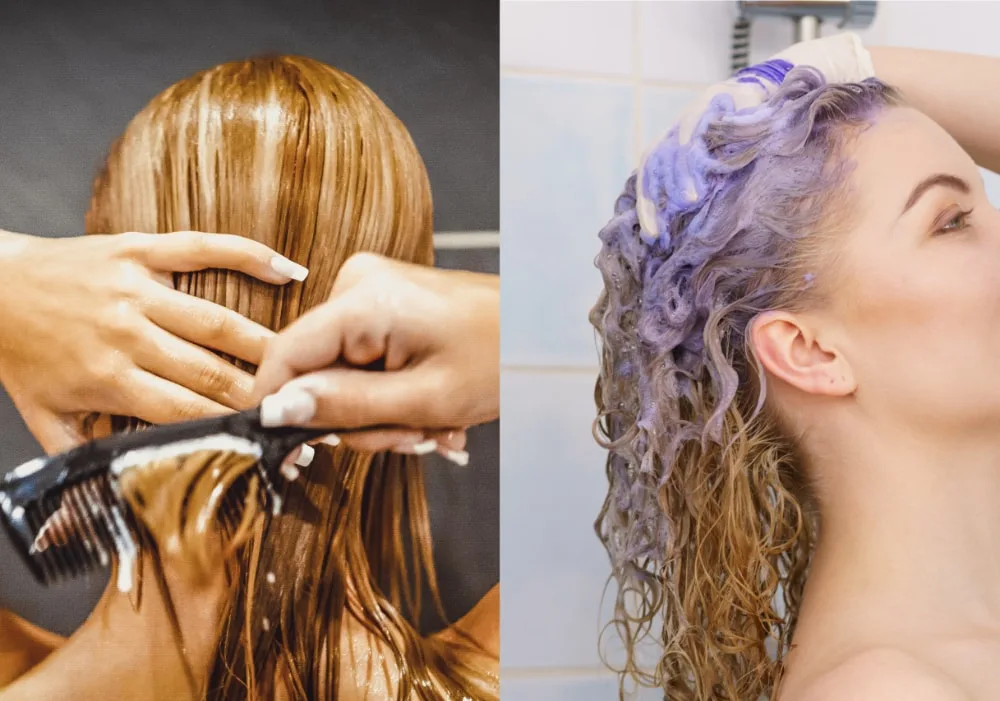
Since the developer forces open the cuticles of your hair, it causes some damage to it. The hair and the new color require maintenance to ensure your hair remains healthy and hold on to color for as long as possible.
Some of the ways to care for your hair after using a toner with a developer include:
- Wash your hair with color-safe products at least 24-48 hours after toning. Avoid sulfate-based shampoos or conditioners for long-lasting color.
- Avoid washing your hair every day to minimize fading and protect your hair from dryness.
- Deep condition to help close the cuticle and seal in the toner. Remember to moisturize your hair to prevent dryness and brittleness.
- Avoid using hot water on your color-treated hair. Use cold or warm water when washing your hair to prevent fading and dryness.
- Protect your hair with a hat when you’re in the sun.
- If your hair is too damaged from the lightening and toning process, use hair treatments such as Olaplex to nourish it.
- Minimize heat styling to prevent dry, brittle hair and color fading.
- Incorporate purple or blue shampoo into your weekly hair care routine to deal with unwanted orange, brassy, or yellow undertones.
Final Words
When choosing your developer to use with toner, consider the desired results, your hair health, and the manufacturer’s recommendations.
10- and 20-volume developers are commonly used for toning hair due to their effectiveness and minimal damage to hair and the scalp. Use 30 and 40-volume developers with toner for more drastic color changes
FAQs
If you still want to know more about what developer to use with toner, check the questions and answers below.
A 20-volume developer is the best to use with toner after bleaching your hair, as it allows for better deposition of color and even results. However, the recommendations on the toner packaging should take precedence.
10-vol developer is the best choice when toning dark hair since it does not lift color from your strands.
Use a 30-vol developer with toner, as it provides moderate lift and suits multiple hair types. While 40-vol developers can do the job, they can easily damage your hair and scalp.
Yes, 20 developers can lighten the hair significantly, but there are better choices if you want to lift the color. 20-vol developers will help deposit color evenly onto your hair.
Use a 10-volume developer when you want to tone your hair but not lighten it.
Lower-volume developer is less damaging to hair but provides the lowest amount of lift.
Higher volume developer is best for toning hair that requires lifting hair color three or more levels but has the highest risk of damaging your hair and scalp.
